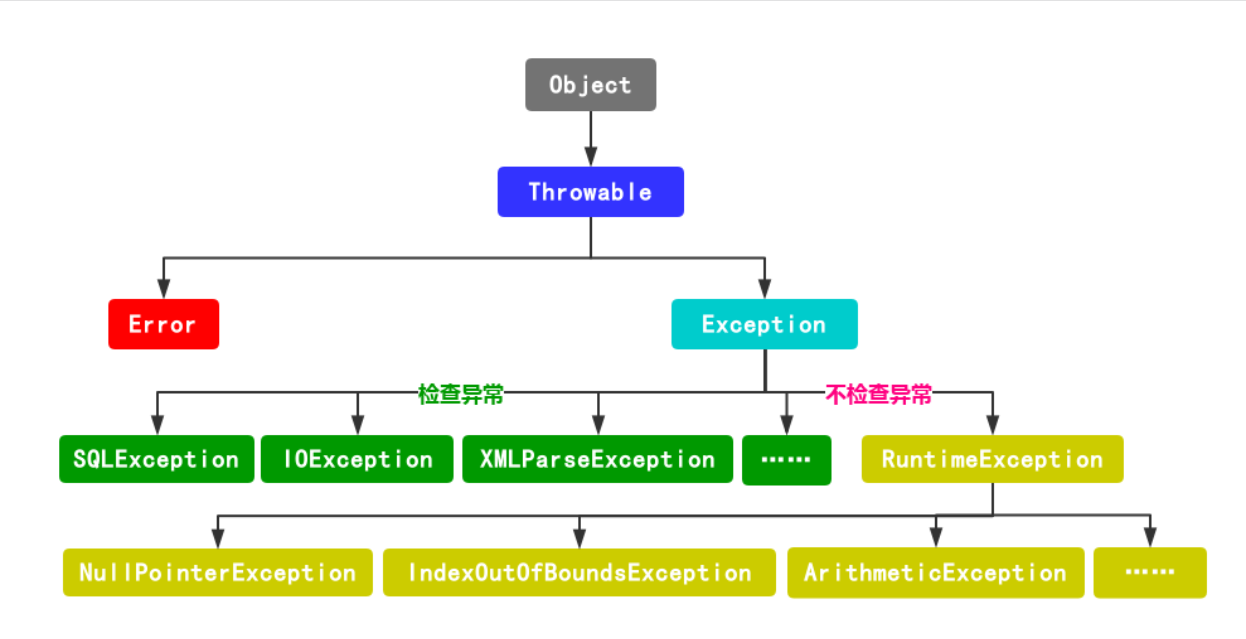第十一章 日期类
import java.text.SimpleDateFormat;import java.util.Date;public class DateTest01 {public static void main(String[] args) throws Exception {// 获取系统当前时间(精确到毫秒的系统当前时间)// 直接调用无参数构造方法就行。Date nowTime = new Date();// java.util.Date类的toString()方法已经被重写了。// 输出的应该不是一个对象的内存地址,应该是一个日期字符串。//System.out.println(nowTime); //Thu Mar 05 10:51:06 CST 2020// 日期可以格式化吗?// 将日期类型Date,按照指定的格式进行转换:Date --转换成具有一定格式的日期字符串-->String// SimpleDateFormat是java.text包下的。专门负责日期格式化的。/*yyyy 年(年是4位)MM 月(月是2位)dd 日HH 时mm 分ss 秒SSS 毫秒(毫秒3位,最高999。1000毫秒代表1秒)注意:在日期格式中,除了y M d H m s S这些字符不能随便写之外,剩下的符号格式自己随意组织。*/SimpleDateFormat sdf = new SimpleDateFormat("yyyy-MM-dd HH:mm:ss SSS");//SimpleDateFormat sdf = new SimpleDateFormat("dd/MM/yyyy");//SimpleDateFormat sdf = new SimpleDateFormat("yy/MM/dd HH:mm:ss");String nowTimeStr = sdf.format(nowTime);System.out.println(nowTimeStr);// 假设现在有一个日期字符串String,怎么转换成Date类型?// String --> DateString time = "2008-08-08 08:08:08 888";//SimpleDateFormat sdf2 = new SimpleDateFormat("格式不能随便写,要和日期字符串格式相同");// 注意:字符串的日期格式和SimpleDateFormat对象指定的日期格式要一致。不然会出现异常:java.text.ParseExceptionSimpleDateFormat sdf2 = new SimpleDateFormat("yyyy-MM-dd HH:mm:ss SSS");Date dateTime = sdf2.parse(time);System.out.println(dateTime); //Fri Aug 08 08:08:08 CST 2008}}
/*获取自1970年1月1日 00:00:00 000到当前系统时间的总毫秒数。1秒 = 1000毫秒简单总结一下System类的相关属性和方法:System.out 【out是System类的静态变量。】System.out.println() 【println()方法不是System类的,是PrintStream类的方法。】System.gc() 建议启动垃圾回收器System.currentTimeMillis() 获取自1970年1月1日到系统当前时间的总毫秒数。System.exit(0) 退出JVM。*/public class DateTest02 {public static void main(String[] args) {// 获取自1970年1月1日 00:00:00 000到当前系统时间的总毫秒数。long nowTimeMillis = System.currentTimeMillis();System.out.println(nowTimeMillis); //1583377912981// 统计一个方法耗时// 在调用目标方法之前记录一个毫秒数long begin = System.currentTimeMillis();print();// 在执行完目标方法之后记录一个毫秒数long end = System.currentTimeMillis();System.out.println("耗费时长"+(end - begin)+"毫秒");}// 需求:统计一个方法执行所耗费的时长public static void print(){for(int i = 0; i < 1000000000; i++){System.out.println("i = " + i);}}}
import java.text.SimpleDateFormat;import java.util.Date;public class DateTest03 {public static void main(String[] args) {// 这个时间是什么时间?// 1970-01-01 00:00:00 001Date time = new Date(1); // 注意:参数是一个毫秒SimpleDateFormat sdf = new SimpleDateFormat("yyyy-MM-dd HH:mm:ss SSS");String strTime = sdf.format(time);// 北京是东8区。差8个小时。System.out.println(strTime); // 1970-01-01 08:00:00 001// 获取昨天的此时的时间。Date time2 = new Date(System.currentTimeMillis() - 1000 * 60 * 60 * 24);String strTime2 = sdf.format(time2);System.out.println(strTime2); //2020-03-04 11:44:14 829}}
第十二章 数字类
import java.math.BigDecimal;/*1、BigDecimal 属于大数据,精度极高。不属于基本数据类型,属于java对象(引用数据类型)这是SUN提供的一个类。专门用在财务软件当中。2、注意:财务软件中double是不够的。咱们之前有一个学生去用友面试,经理就问了这样一个问题:你处理过财务数据吗?用的哪一种类型?千万别说double,说java.math.BigDecimal*/public class BigDecimalTest01 {public static void main(String[] args) {// 这个100不是普通的100,是精度极高的100BigDecimal v1 = new BigDecimal(100);// 精度极高的200BigDecimal v2 = new BigDecimal(200);// 求和// v1 + v2; // 这样不行,v1和v2都是引用,不能直接使用+求和。BigDecimal v3 = v1.add(v2); // 调用方法求和。System.out.println(v3); //300BigDecimal v4 = v2.divide(v1);System.out.println(v4); // 2}}
import java.text.DecimalFormat;/*关于数字的格式化。(了解)*/public class DecimalFormatTest01 {public static void main(String[] args) {// java.text.DecimalFormat专门负责数字格式化的。//DecimalFormat df = new DecimalFormat("数字格式");/*数字格式有哪些?# 代表任意数字, 代表千分位. 代表小数点0 代表不够时补0###,###.##表示:加入千分位,保留2个小数。*/DecimalFormat df = new DecimalFormat("###,###.##");//String s = df.format(1234.56);String s = df.format(1234.561232);System.out.println(s); // "1,234.56"DecimalFormat df2 = new DecimalFormat("###,###.0000"); //保留4个小数位,不够补上0String s2 = df2.format(1234.56);System.out.println(s2); // "1,234.5600"}}
第十三章 random类
import java.util.Random;/*** 随机数*/public class RandomTest01 {public static void main(String[] args) {// 创建随机数对象Random random = new Random();// 随机产生一个int类型取值范围内的数字。int num1 = random.nextInt();System.out.println(num1);// 产生[0~100]之间的随机数。不能产生101。// nextInt翻译为:下一个int类型的数据是101,表示只能取到100.int num2 = random.nextInt(101); //不包括101System.out.println(num2);}}
第十四章 枚举
1. 枚举基本概念
1.1 语法
enum 枚举类型名{ 枚举值1,枚举值2 }
1.2 什么时候使用
结果超过两种并且还是可以一枚一枚列举出来的,建议使用枚举类型,例如:颜色、四季、星期等都可 以使用枚举类型。
1.3 switch语句中使用枚举
enum ColorType{GREEN,RED,ORANGE,WHITE,BLACK}private void TestEnum(ColorType type){switch (type){case ColorType.GREEN:break;case ColorType.RED:break;case ColorType.ORANGE:break;case ColorType.WHITE:break;case ColorType.BLACK:break;default:}}
以上会报一个错误:
an enum switch case label must be the unqualified name of an enumeration constant
意思是: 枚举 switchcase 标签必须为枚举常量的非限定名称,即case语句中只能写枚举类定义的变量名称,不能加类名,如下代码:
private void TestEnum(ColorType type){switch (type){case GREEN:break;case RED:break;case ORANGE:break;case WHITE:break;case BLACK:break;default:}}
第十五章 异常
1. 异常的概念及作用
- 程序执行过程中发生了不正常的情况,而这种不正常的情况叫做:异常,java语言是很完善的语言,提供了异常的处理方式,当程序执行过程中出现了不正常情况,java把该异常信息打印输出到控制台,供程序员参考。程序员看到异常信息之后,可以对程序进行修改,让程序更加的健壮。
- 异常是一个类,可以通过构造方法实例化异常类对象
2. 异常是什么时候创建的
public class ExceptionTest03 {public static void main(String[] args) {/*程序执行到此处发生了ArithmeticException异常,底层new了一个ArithmeticException异常对象,然后抛出了,由于是main方法调用了100 / 0,所以这个异常ArithmeticException抛给了main方法,main方法没有处理,将这个异常自动抛给了JVM。JVM最终终止程序的执行。ArithmeticException 继承 RuntimeException,属于运行时异常。在编写程序阶段不需要对这种异常进行预先的处理。*/System.out.println(100 / 0);// 这里的HelloWorld没有输出,没有执行。System.out.println("Hello World!");}}
3. 异常的继承机制

- Exception的直接子类:编译时异常(要求程序员在编写程序阶段必须预先对这些异常进行处理,如果不处理编译器报错,因此得名编译时异常,也叫受检异常:CheckedException、受控异常)
- RuntimeException:运行时异常(在编写程序阶段程序员可以预先处理,也可以不管,都行;也叫非受检异常:UnCheckedException、非受控异常)
- 编译时异常和运行时异常,都是发生在运行阶段;编译阶段异常是不会发生的,编译时异常因为什么而得名因为编译时异常必须在编译(编写)阶段预先处理,如果不处理编译器报错,因此得名。
- 所有异常都是在运行阶段发生的。因为只有程序运行阶段才可以new对象。因为异常的发生就是new异常对象。
3.1 编译时异常和运行时异常的区别
- 编译时异常一般发生的概率比较高。对于一些发生概率较高的异常,需要在运行之前对其进行预处理。- 运行时异常一般发生的概率比较低。没必要提前对这种发生概率较低的异常进行预处理。
4. 异常的处理
public class ExceptionTest05 {// 第一种处理方式:在方法声明的位置上继续使用:throws,来完成异常的继续上抛。抛给调用者。// 上抛类似于推卸责任。(继续把异常传递给调用者。)/*public static void main(String[] args) throws ClassNotFoundException {doSome();}*/// 第二种处理方式:try..catch进行捕捉。// 捕捉等于把异常拦下了,异常真正的解决了。(调用者是不知道的。)public static void main(String[] args) {try {doSome();} catch (ClassNotFoundException e) {e.printStackTrace();}}public static void doSome() throws ClassNotFoundException{System.out.println("doSome!!!!");}}
注意: 只要异常没有捕捉,采用上报的方式,此方法的后续代码不会执行。 另外需要注意,try语句块中的某一行出现异常,该行后面的代码不会执行。 try..catch捕捉异常之后,后续代码可以执行。 在以后的开发中,处理编译时异常,应该上报还是捕捉呢,怎么选? 如果希望调用者来处理,选择throws上报。 其它情况使用捕捉的方式。
- 一般不建议在main方法上使用throws,因为这个异常如果真正的发生了,一定会抛给JVM,JVM只有终止,异常处理机制的作用就是增强程序的健壮性:
怎么能做到,异常发生了也不影响程序的执行。所以一般main方法中的异常建议使用try..catch进行捕捉。main就不要继续上抛了。
- throws后面也可以写多个异常,可以使用逗号隔开。
4.1 深入try..catch
1、catch后面的小括号中的类型可以是具体的异常类型,也可以是该异常类型的父类型。
2、catch可以写多个。建议catch的时候,精确的一个一个处理。这样有利于程序的调试。
3、catch写多个的时候,从上到下,必须遵守从小到大。
4.2 异常对象有两个非常重要的方法
- 获取异常简单的描述信息:String msg = exception.getMessage();- 打印异常追踪的堆栈信息:exception.printStackTrace();
public class ExceptionTest08 {public static void main(String[] args) {// 这里只是为了测试getMessage()方法和printStackTrace()方法。// 这里只是new了异常对象,但是没有将异常对象抛出。JVM会认为这是一个普通的java对象。NullPointerException e = new NullPointerException("空指针异常fdsafdsafdsafds");// 获取异常简单描述信息:这个信息实际上就是构造方法上面String参数。String msg = e.getMessage(); //空指针异常fdsafdsafdsafdsSystem.out.println(msg);// 打印异常堆栈信息// java后台打印异常堆栈追踪信息的时候,采用了异步线程的方式打印的;所以Hello world//可能会在堆栈追踪信息之前打印e.printStackTrace();for(int i = 0; i < 1000; i++){System.out.println("i = " + i);}System.out.println("Hello World!");}}
4.3 关于try..catch中的finally子句
1、在finally子句中的代码是最后执行的,并且是一定会执行的,即使try语句块中的代码出现了异常,finally子句必须和try一起出现,不能单独编写。
2、finally语句通常使用在哪些情况下呢?
通常在finally语句块中完成资源的释放/关闭
因为finally中的代码比较有保障
即使try语句块中的代码出现异常,finally中代码也会正常执行
public class ExceptionTest11 {public static void main(String[] args) {/*try和finally,没有catch可以吗?可以。try不能单独使用。try finally可以联合使用。以下代码的执行顺序:先执行try...再执行finally...最后执行 return (return语句只要执行方法必然结束。)*/try {System.out.println("try...");return;} finally {// finally中的语句会执行。能执行到。System.out.println("finally...");}// 这里不能写语句,因为这个代码是无法执行到的。//System.out.println("Hello World!");}}
public class ExceptionTest12 {public static void main(String[] args) {try {System.out.println("try...");// 退出JVMSystem.exit(0); // 退出JVM之后,finally语句中的代码就不执行了!} finally {System.out.println("finally...");}}}
public class ExceptionTest13 {public static void main(String[] args) {int result = m();System.out.println(result); //100}/*java语法规则(有一些规则是不能破坏的,一旦这么说了,就必须这么做!):java中有一条这样的规则:方法体中的代码必须遵循自上而下顺序依次逐行执行(亘古不变的语法!)java中还有一条语法规则:return语句一旦执行,整个方法必须结束(亘古不变的语法!)*/public static int m(){int i = 100;try {// 这行代码出现在int i = 100;的下面,所以最终结果必须是返回100// return语句还必须保证是最后执行的。一旦执行,整个方法结束。return i;} finally {i++;}}}/*反编译之后的效果public static int m(){int i = 100;int j = i;i++;return j;}*/
4.4 final finally finalize有什么区别
final 关键字
final修饰的类无法继承
final修饰的方法无法覆盖
final修饰的变量不能重新赋值。
finally 关键字<br /> 和try一起联合使用。<br /> finally语句块中的代码是必须执行的。finalize 标识符<br /> 是一个Object类中的方法名。<br /> 这个方法是由垃圾回收器GC负责调用的。
4.5 方法覆盖的遗留问题
class Animal {public void doSome(){}public void doOther() throws Exception{}}class Cat extends Animal {// 编译正常。public void doSome() throws RuntimeException{}// 编译报错。/*public void doSome() throws Exception{}*/// 编译正常。/*public void doOther() {}*/// 编译正常。/*public void doOther() throws Exception{}*/// 编译正常。public void doOther() throws NullPointerException{}}
- 父类方法抛出一个FileNotFoundException,这时候子类可以抛出FileNotException或者其子类,例如我自己写了File1Exception,File2Exception,他们都继承自FileNotException,这时候子类可以同时抛出File1Exception和File2Exception,因为他们都是FileNotFoundException,满足“子类抛出的异常类型不能比父类抛出的异常类型更宽泛”这个条件 同时子类还可以抛出RuntimeExceptioin这是运行时异常,不受上面条件的约束
5. Java中怎么自定义异常
第一步:编写一个类继承Exception或者RuntimeException.
第二步:提供两个构造方法,一个无参数的,一个带有String参数的。
public class MyException extends Exception{ // 编译时异常public MyException(){}public MyException(String s){super(s);}}/*public class MyException extends RuntimeException{ // 运行时异常}*/

